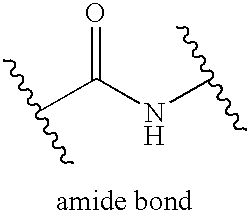Compositions and uses of motor protein-binding moieties
a technology of motor protein and binding moieties, which is applied in the field of compositions and uses of motor protein binding moieties, can solve the problems of not significantly enhancing the delivery of larger molecules, and achieve the effect of enhancing cellular uptake and/or transmembrane movemen
- Summary
- Abstract
- Description
- Claims
- Application Information
AI Technical Summary
Benefits of technology
Problems solved by technology
Method used
Image
Examples
examples
[0313] Preparation of Dynein-Binding Peptide-Plasmid Conjugate
[0314] A dynein-binding peptide with a cysteine terminus (sequence: CSYSKETQPL, SEQ ID NO: 14) was synthesized by solid phase peptide synthesis and purified by reverse phase high pressure liquid chromatography. The peptide was conjugated to a rhodamine and maleimide double-labeled plasmid containing the GFP gene (plasmid purchased from Gene Therapy Systems, San Diego, Calif.) by mixing the peptide with DNA at 100:1 molar excess of peptide to DNA. Five minutes after mixing peptide with plasmid, TCEP (Tris(2-carboxyethyl)phosphine) was added to a final concentration of 5 mM to reduce dimerized peptides. The resulting solution was stirred at room temperature for 1 hour. A small aliquot was then collected, digested with Xmn I / BamH I for gel electrophoresis analysis. Approximately 50% of the plasmids were successfully conjugated. The free peptide in the remaining solution was removed by size exclusion chromatography through a...
PUM
| Property | Measurement | Unit |
|---|---|---|
| dissociation constant Kd | aaaaa | aaaaa |
| dissociation constant | aaaaa | aaaaa |
| dissociation constant | aaaaa | aaaaa |
Abstract
Description
Claims
Application Information
 Login to View More
Login to View More - R&D
- Intellectual Property
- Life Sciences
- Materials
- Tech Scout
- Unparalleled Data Quality
- Higher Quality Content
- 60% Fewer Hallucinations
Browse by: Latest US Patents, China's latest patents, Technical Efficacy Thesaurus, Application Domain, Technology Topic, Popular Technical Reports.
© 2025 PatSnap. All rights reserved.Legal|Privacy policy|Modern Slavery Act Transparency Statement|Sitemap|About US| Contact US: help@patsnap.com



